Rain streaked the hostel windows as Tom and I ate breakfast, gazed despondently at maps and thumbed with no real interest through guidebooks. The weather was demoralising. Welcome to Borrowdale, Lake District: England’s wettest place.
Finally, Tom closed the book he’d been holding in his left hand, lay down the spoon in his right and sighed. “Fancy a poke about the Seathwaite mines?” My mother had warned me about accepting such invitations, but alternative offers were non-existent.
“Sure. Why not?” And so our history-laden, legend-spiced exploration into a substance known locally as ‘wad’ began.
What in the world is wad? Also known as graphite, plumbago or black lead, the mineral is a form of carbon. Initially used as a marker for sheep, it was discovered in Borrowdale in the mid-16th century.
Thanks to its lubricating and heat-resistant properties it went on to be used for the casting of cannonballs and, as anyone who has visited the museum in Keswick will know, was also used for making pencils.
The mines
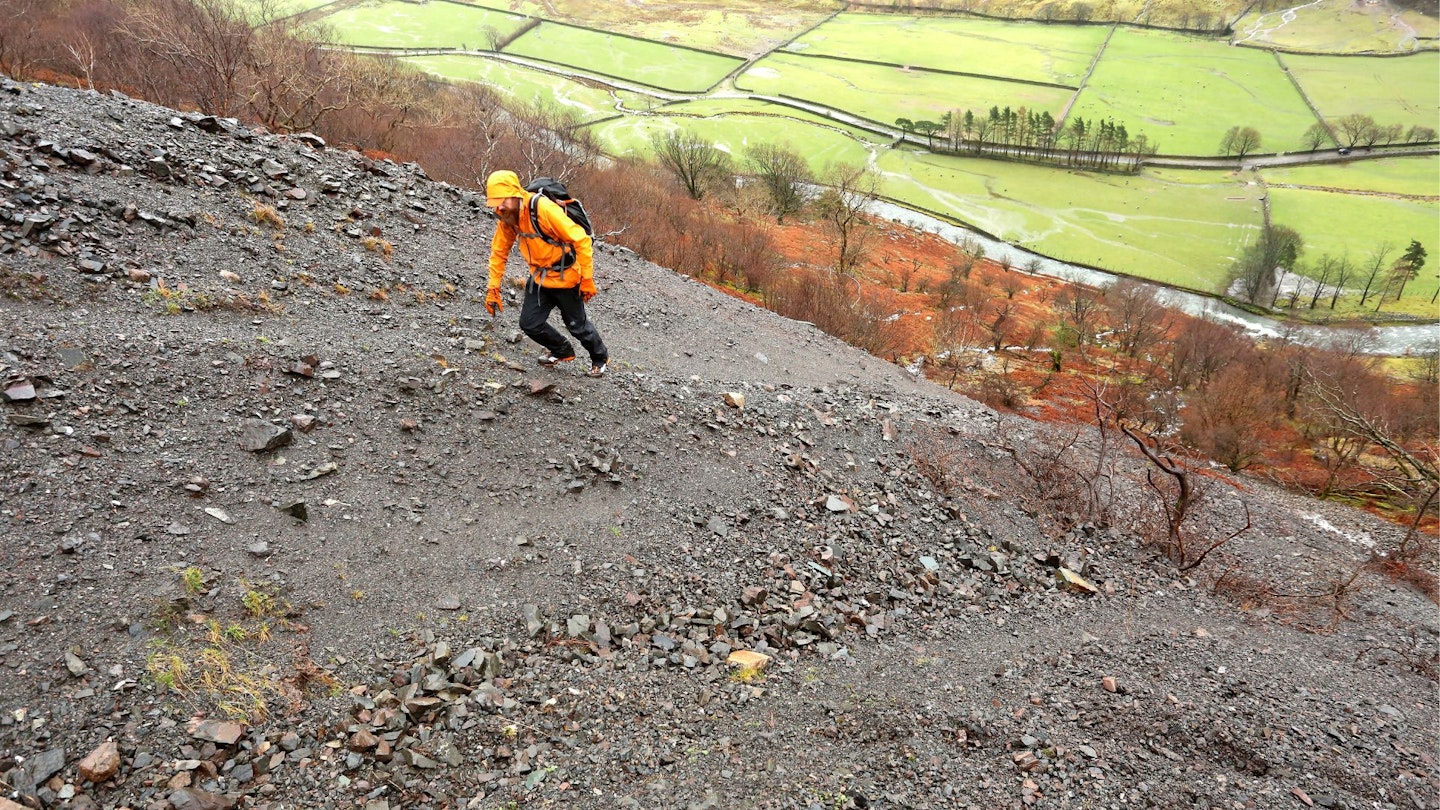
We walked along the track from Seathwaite Farm, over the footbridge above a swollen River Derwent, and climbed the hillside by Newhouse Gill. Spoil heaps streak down these slopes and we inspected each one we crossed carefully.
These are the waste from the mines; the detritus of excavation and valueless discardings. But some things left or thrown away are of interest. We found broken remnants of the clay pipes the miners smoked and even a few small shiny black lumps of rock that left a grey smudge on our fingers…
Higher up, beyond the long-tumbled remains of stone buildings, dark tunnels disappear into the fellside. Some of these were entrances to the mines, others were dug to relieve the flooding in the tunnels.
Tom and I cautiously stepped into the darkness of one, switching on head torches as the light receded behind us. Mines are not safe places, so we had no intention of delving too deep.
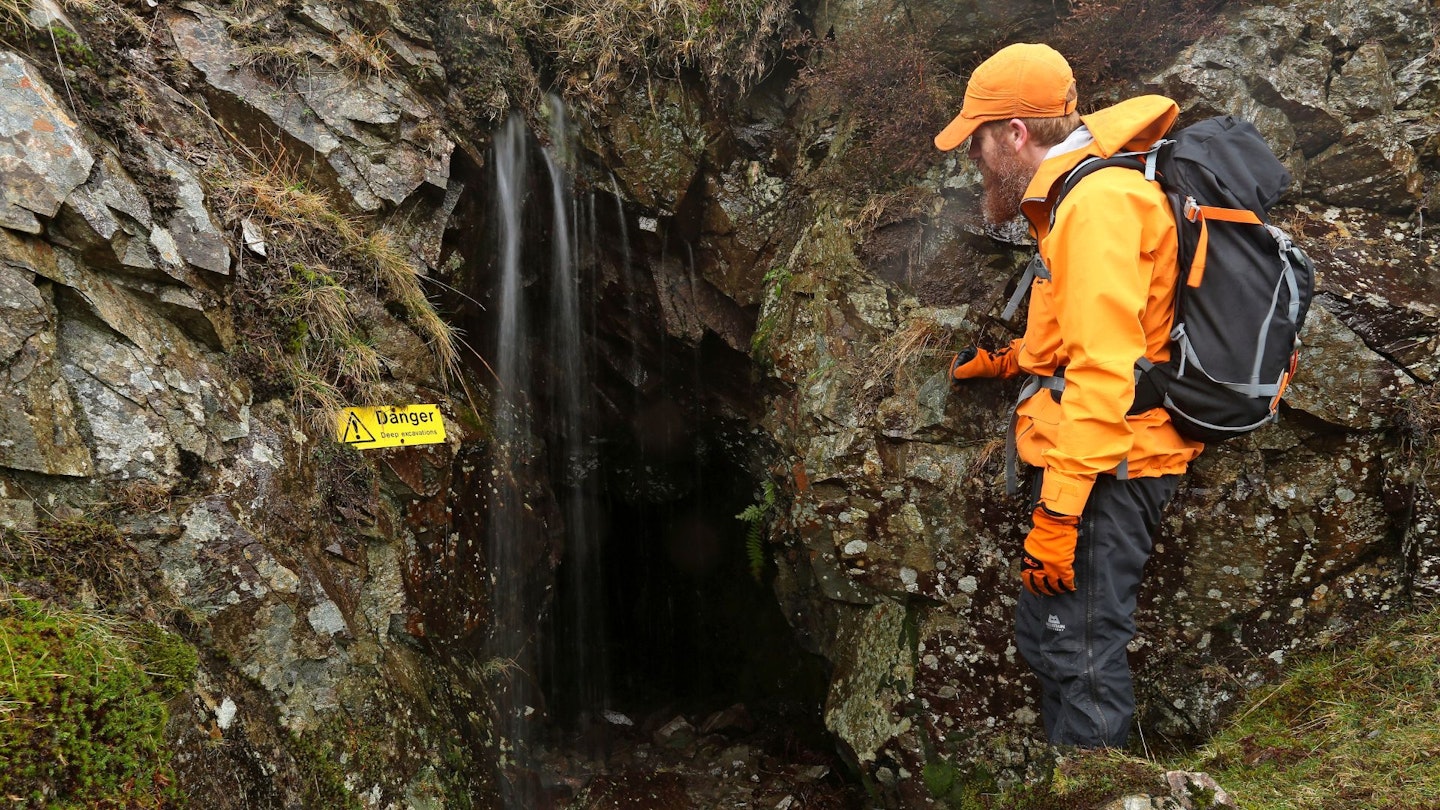
A short distance in, tunnels led off in diverging directions, and one disappeared straight down. Some climbing/caving paraphernalia fixed by bolts to the walls suggested people had descended that way, but not us.
Rounding a corner we found what we were looking for. In an excavated cavern, still embedded into and very much part of the rock, a slightly metallic, very subtly iridescent, silveryblack substance caught the sweep of our headtorches and left tell-tale black smudges on our hands. Graphite.
Why did they stop mining graphite in Borrowdale? It’s the fault of the French. Or at least, a Frenchman. And possibly ball-point pens. During the Napoleonic war, with supplies of Cumbrian graphite cut off, the French had to come up with another way to cast their cannonballs.
Some petit futé named Nicholas Jacques-Conté came up with the idea of combining graphite and clay, which worked well and soon became the norm, reducing the demand for graphite. Its use in pencils was not enough to keep wad mining profitable and in 1891 the Borrowdale operation ceased for good.
The discovery
Back at the hostel Tom reminded me of the story that had featured in Trail back in March 2005. The article was about the discovery of the remains of a wad smuggler’s hut high up on the north crags of Great Gable.
It had been spotted by our then mountaineering editor on a winter climbing trip, and he in turn had excitedly told the then editor of Trail all about it.
Armed with ropes, harnesses, helmets and enough knowledge of where the remains were to go looking for them, the two editors and Tom as photographer went back in search of the remains. And they found it. It was really quite a story.
“So where is it?” I asked Tom. “I can’t quite be sure,” he replied. “The weather was clagged in, we couldn’t see much beyond a few feet in front of us, and I was busy taking photos.” Then he caught on to what I was hinting at.
“But I reckon we could find it again,” he said with a smile. Which was exactly the reply I wanted. A hidden smuggler’s hut high in the crags of one of the Lake District’s most famous mountains?
What was there not to get excited about?
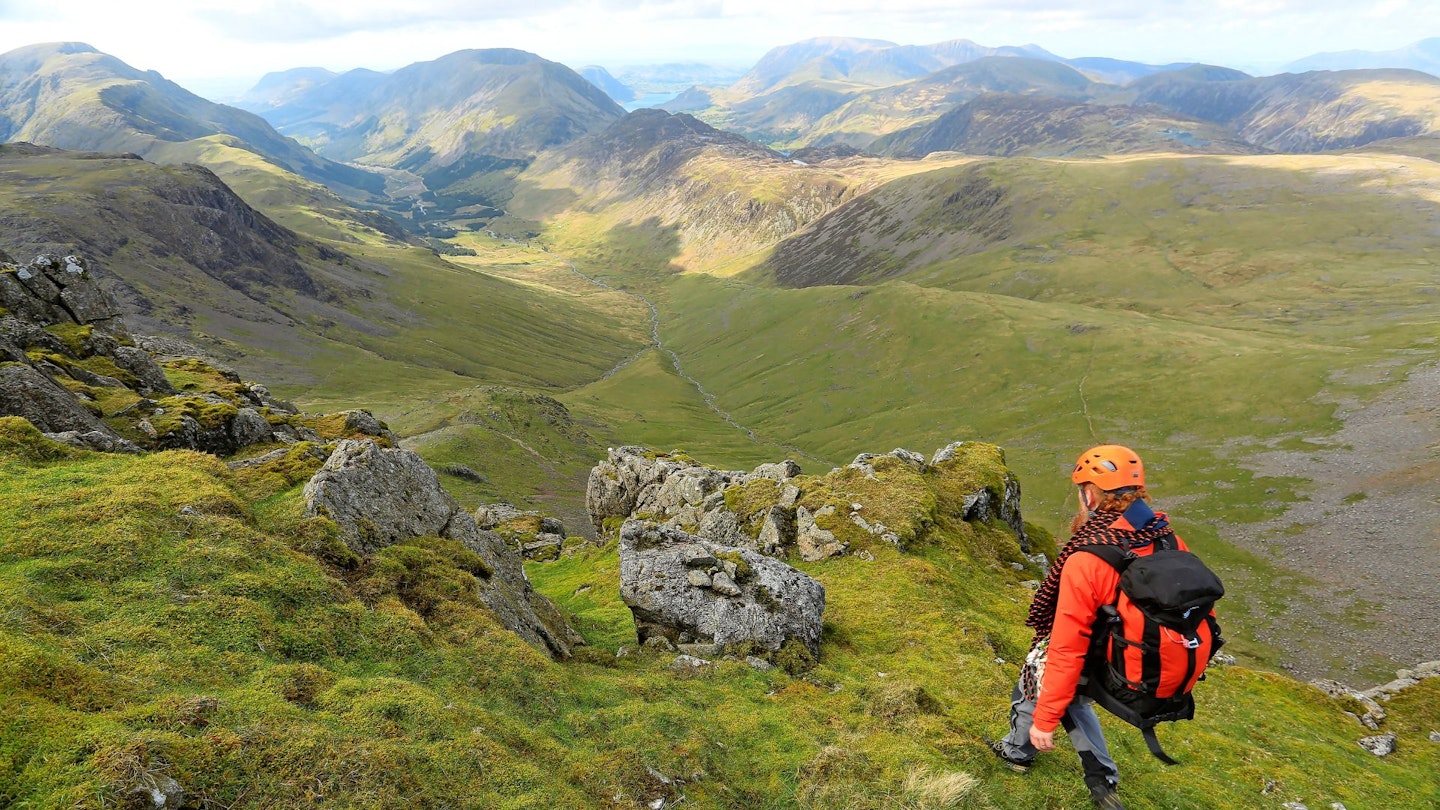
Clearly, though, clambering around on the high, steep crags of Great Gable’s north face was not an activity for the grim weather we weren't enjoying, so any hut-hunting would have to wait for another time with better weather.
Nonetheless, wad had suddenly got significantly more interesting.
Did Trail really discover a secret smuggler’s hut? It’s probably more accurate to say it was rediscovered. In Owen Glynne Jones’s Rock-climbing in the English Lake District (first published in 1897) the smuggler’s hut is mentioned several times in the chapter on Gable Crag; it’s labelled on a sketch of the Gable’s Ennerdale face as ‘Smuggler’s Retreat’.
Wainwright also named it as such some 70 years later, calling it “the highest site ever used for building in England” (although he acknowledged that it was almost completely derelict).
So it was certainly known of. However, in the 1980s the writer and mountaineer Harry Griffin was unable to find any trace of the stone hut, and it was assumed that winter storms had stripped the mountain of any remnants.
But that turned out not to be the case. While all that Trail discovered in 2005 was a few tumbledown walls, they returned with photographic evidence of its continued existence.
Great Gable
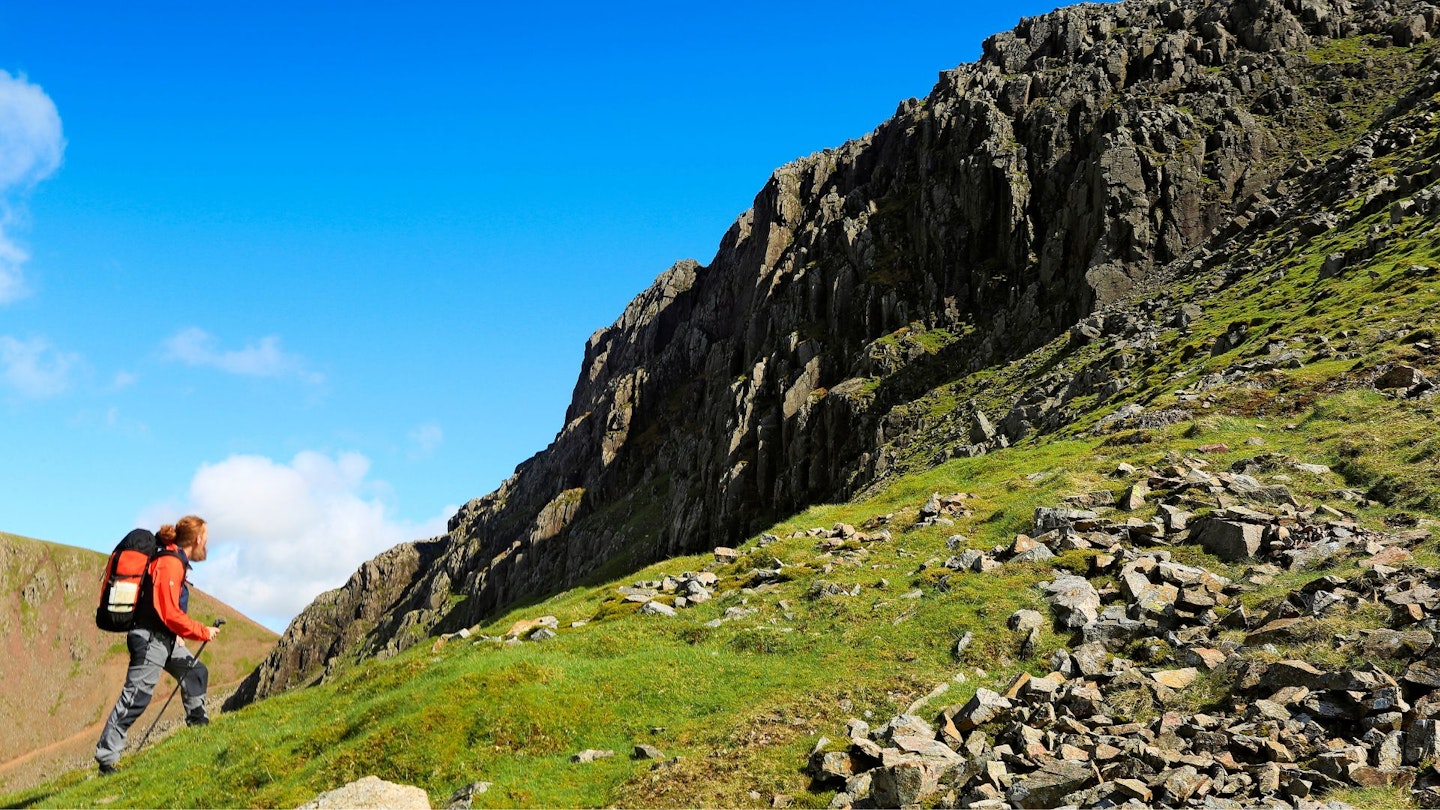
On an afternoon of much better weather – the kind that’s relatively rare in the Lake District – Tom and I found ourselves standing beside the section of the Moses’ Trod path that skirts around Stone Cove below Green and Great Gable, staring up at the rocky complexity of Gable Crag.
We knew roughly where the hut should be, but we could see no sign of it. Allegedly, the hut used to be clearly visible from the summit of Green Gable, but that seemed unlikely now, and certainly not worth the extra ascent to find out.
As I looked towards the top of the crags and Great Gable’s summit I asked Tom the question that had been bothering me. “Do you think you’ll remember the way down from the top?” There was a long pause before he replied.
“I think so. I’m not sure. Maybe. I don’t honestly know.” Well that cleared that up. Still, there was nothing to be lost by looking. Hoping for the best but aware the odds were against us, we set off again along Moses’ Trod.
A climbers’ traverse path cuts across the hillside directly below Gable Crags, and we spent a little time wandering back and forth along it, seeing if we could spot anything from below.
It was a futile effort; the angle was too steep, and little could be seen of the top of the crags. We returned to the main path, climbed towards Beck Head, then began the rocky clamber up to Great Gable’s summit.
Who was Moses and what was his trod? The path that winds from Honister over the fells to Wasdale was part of the route transporting Lake District slate to the port at Ravenglass, and the man after whom it is named, Moses Rigg, was a slate miner.
Moses’ Trod used to be known as Moses’ Sledgate, a reference to how slate was transported. But Moses was said to be carrying a little more than slate on his sled: moonshine whisky and smuggled wad.
The trod that’s named after him passes directly below the face of Gable Crags on which the hut is said to be hidden. Coincidence? Perhaps, after all there’s no historical evidence that Moses Rigg actually existed.
But there were definitely men who smuggled wad, and distilled illegal whisky, and someone built that hut on the hills, whatever his name was.
The hut

We got lucky. From the top of Great Gable the crags drop away dramatically, and there are few places from which it’s even possible, let alone advisable, to descend any great distance.
But using a map harvested from the Trail 2005 article, the diagram in ‘Rock-climbing in the English Lake District’, and the occasional flash of recognition that sparked in Tom’s brain, we found a likely looking candidate for the descent route almost immediately.
Out came the rope and on went the helmets and harnesses. I began to lower Tom into the unknown… but it wasn’t the unknown. Familiarity had come flooding back to him. “This is it!” he shouted back up to me.
Then, shortly afterwards “I can see it!”. Moving with ropes slows everything down, but as I approached the tiny ledge on which the remains of the hut was perched, it was clear they were needed.
Had a smuggler, laden with his illicit wares, come down this way? Quite probably, and it wouldn’t have taken much in the way of fixed ropes (hidden, naturally) to make it manageable.
But, and it’s a ‘but’ the size of Gable Crags, one slip and you’d be a goner; the drop beyond the ledge is big and unsurvivable. But here it was, the remains of the hut I’d read and heard so much about.
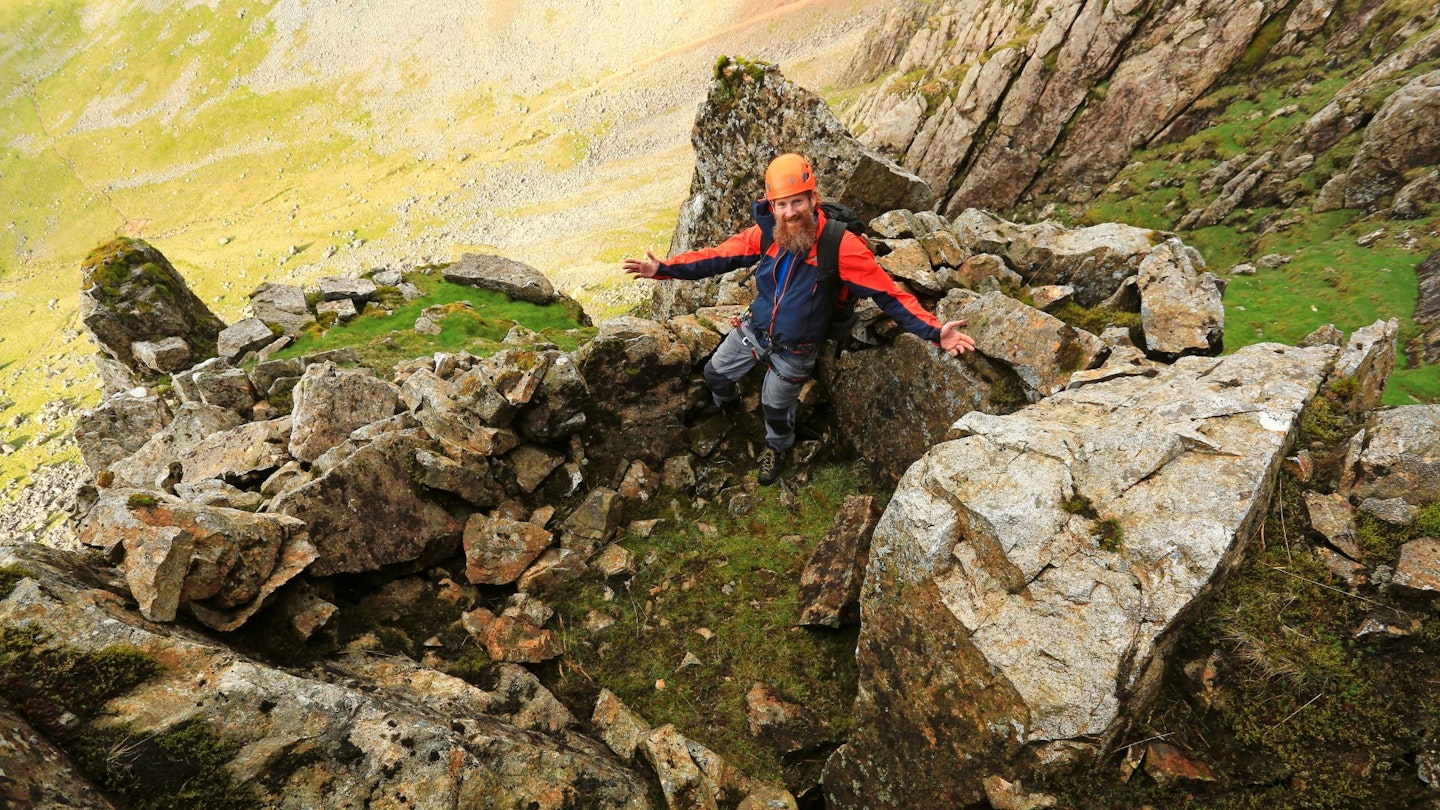
Admittedly, it could barely be given the title’ hut’ now; all that’s left are the lower parts of two walls, built against boulders that formed the opposite sides. When Tom had first visited the hut he’d found a small lump of wad in one corner, but that had long since gone.
But what Tom hadn’t had before was any kind of view, and in that respect we had hit the jackpot.
Why was wad smuggled? It was hugely valuable. In the 18th century, one wad deposit yielded £43,000 – about £6.5 million in today’s money.
But the mine owners didn’t help themselves. Although the Borrowdale source was unique in the UK, the graphite itself was relatively easily mined. If it looked like the market was going to be overloaded, the mine would be temporarily closed, depleting stocks, increasing demand and keeping prices high.
Hardly surprising that miners were tempted to pilfer wad to supplement their meagre and unpredictable income. Wad theft became such a problem that a law was passed making stealing or receiving wad a felony punishable by whipping and a year’s hard labour or deportation.
The mystery
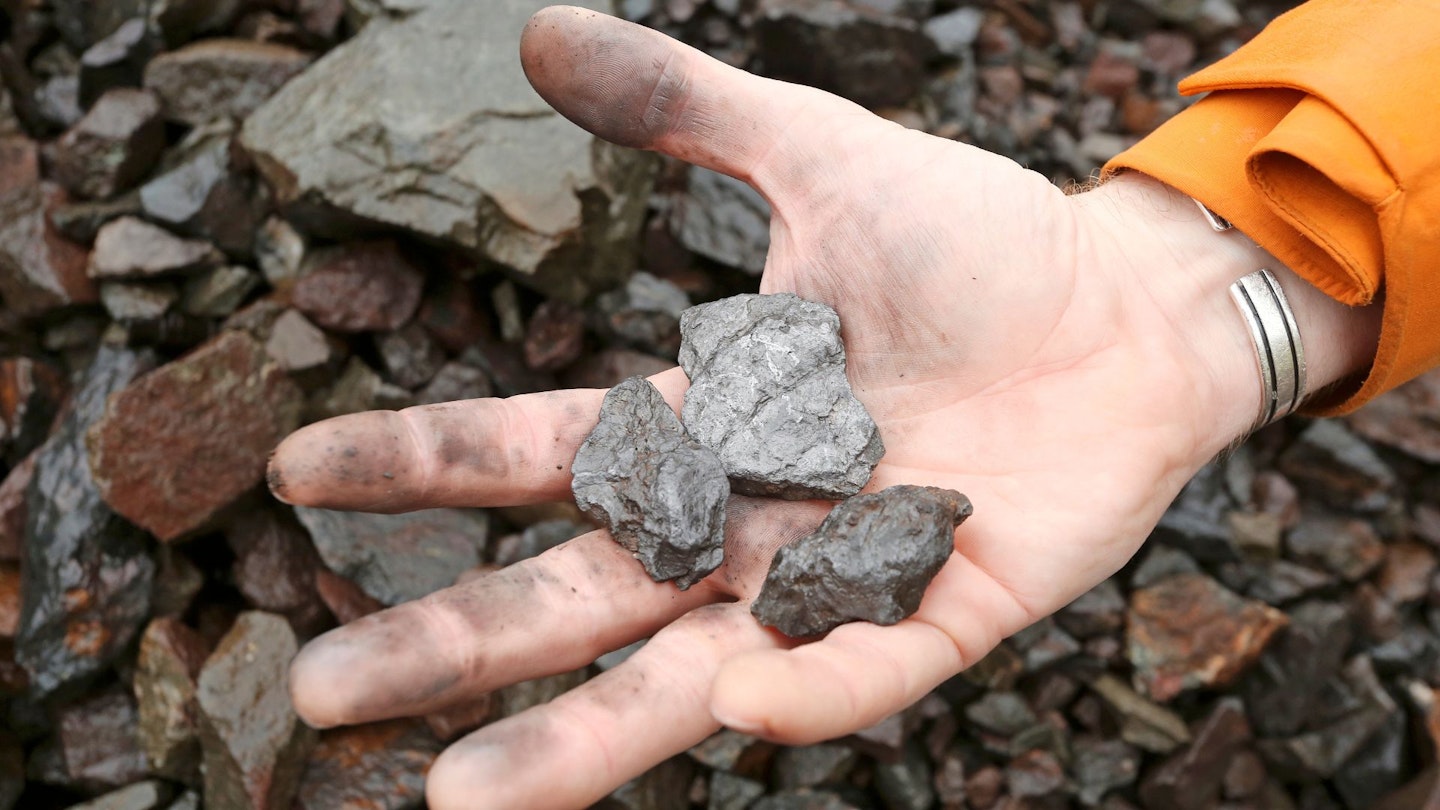
We stood in the hut, watching the dappling of cloud shadows as they passed over the dark greenery of Ennerdale, the distant blue-grey twinkle of Crummock Water and the sprawl of sun-tinted fells laid out for our viewing pleasure. It really was quite a location.
The conversation that started there came with us as we climbed back to Gable’s summit and headed off the hills in the most glorious evening light. Was it really the remains of a wad smuggler’s hut?
Might it have been an illegal whisky distillery? Bog water from Fleetwith Pike made the best moonshine, apparently. And had it been built by the mythical Moses Rigg, or somebody else? The famous Lake District moonshiner Lanty Slee perhaps?
We’d never know. And it didn’t matter. As well as being geological masterpieces, the mountains are full of human stories like this – a reminder that folk have been wandering around the high places of the UK long before Gore-Tex and Vibram were even thought of.
And even if sites like the hut on Gable Crags tell us nothing else about their creators, they do at least suggest this: the mysterious mountain people of the past appreciated a cracking view as much as we do today.
Enjoy this? Follow along as long-suffering Trail photographer Tom Bailey heads in search of a haunted house in the Scottish mountains.
